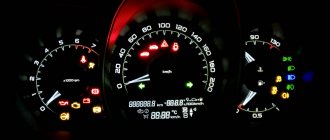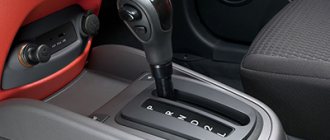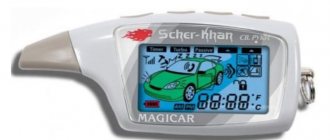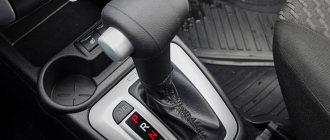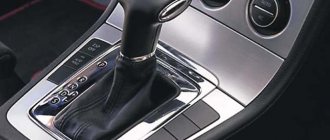Computers love “cleanliness,” both on the hard drive and from dust on the hardware. If the second issue can be dealt with more simply - just clean it, then the first issue is not so easy. The main problem for novice users is the desire to install more “useful” programs and the inability to properly use the computer’s disk space, which leads to problems with its operation. When the situation is at its peak, users have no choice but to reset Windows to factory settings. Our article will describe in detail how to restore the system to its “out of the box” form for different versions, starting with Windows 7.
What is a Windows factory reset?
Let's start with the fact that factory settings are the PC configuration that was installed initially and is the main one for this piece of equipment. All changes that were made by the user during use “disturb” the factory settings and the computer is no longer considered new. Reset to settings “out of the box” - transition to the original state, i.e. getting rid of user settings in general, and, in some cases, even from files and other data that remained after it.
It is recommended to perform a reset only when it is really necessary. Please note that if you have previously reinstalled Windows, either yourself or using computer system wizards, you may not be able to return to factory settings. The whole point is that if you reinstall it incorrectly (stupidly from one disc on which a pirated copy of Windows is recorded), a special recovery partition disappears on the hard drive, on which a copy of the installation version is stored.
This indicates that you cannot simply switch to factory settings - you will need the same distribution that was used initially, and not any other (even if the Windows versions are the same). Otherwise, you will not return the computer to its original form (in software terms) in any way. Therefore, treat reinstalling Windows more judiciously and seriously - if you use the services of wizards, ask them to reinstall Windows so that the recovery partition is not affected. If, nevertheless, the recovery partition was deleted, all you can do is install any convenient version of Windows using a clean installation method (with the removal of all data) and at least somehow create the appearance of a factory reset.
Chrome OS
The convenience of Chromebooks lies in the fact that Chrome OS is natively designed for cloud computing. Almost all information is stored on the Internet, so that the local disk is not cluttered with files and programs. Chromebooks don't need to be reset as often as Windows and macOS devices, but it can still be useful.
To reset to factory settings, you need to open the main account screen and press Ctrl + Alt + Shift + R. This will launch the reset screen. Click Restart, and once your computer has restarted, select Powerwash and Continue. The laptop will return to factory settings and you will need to sign in to your Google account again.
Source
How to reset Windows 7 to factory settings
Unfortunately, the "seven" does not support a quick reset to factory settings, which is an obstacle to returning the computer to its original form without the use of additional knowledge. If you have the task of returning your computer to its original state, you can use the following options:
- Through "Troubleshoot your computer" in "Advanced boot options";
- Using your distribution that came with your PC or laptop.
If you are more inclined to the second option, then you just need to boot from the distribution and select system recovery there. Then everything will happen as usual.
In the case of the first option, you need to go to the “Additional boot options”
. For most computers (laptops), this can be done by pressing the F8 key, which must be pressed immediately after the computer starts booting (without leaving standby or hibernation mode). Once it is downloaded, you need to select the “Troubleshoot your computer” option.
Next, you will be taken to the “System Recovery Options” window. It contains some features that can actually be used before loading the system as a whole. Among them, either a built-in reset or a proprietary one will be hidden. In this case, for example, we have the option of restoring the Toshiba laptop to factory settings.
You will need to go to this item and follow the prompts of the built-in utility so that you can restore the factory settings. Please note that all files on your hard drive that you have used/saved will be permanently deleted.
Loading Last Known Good Configuration
In different laptop models, entering safe mode to further reset or restore the system is done using system utilities. Below are the combinations to run some of them:
On recent UEFI PCs, entering Safe Mode will require you to change the defaults when selecting your OS. More detailed information can be found in the technical documentation.
Using Last Known Good Configuration, you can roll back the latest versions of drivers that you may have installed incorrectly. Or return working system files that were affected by malicious software. This method of returning to the previous configuration will help with minor bugs and freezes that appeared with the latest changes to the system. In case of more serious damage, it may turn out to be useless and you will need to try other methods to get the files back.
How to reset Windows 8|8.1 to factory settings
In the case of Windows 8, things are more favorable. The system interface allows for the use of a built-in factory reset program directly from the “Control Panel”, as well as from the “Advanced Boot Options”. Let's look at this in more detail to improve understanding.
- In this version of Windows, the familiar “Control Panel” is there, but you can take a simpler route to enter the desired menu. You just need to move the mouse from the right of the screen from top to bottom. This can be done either from the regular interface or from the Metro panel;
- Select “Settings”, and then “Change computer settings”:
- If you have version 8, select “General,” if 8.1, select “Update and Recovery.” We have the second option, so we select the appropriate item. Further, everything happens similarly in both Windows 8 and Windows 8.1;
- Select the “Restore” item and get three ways to restore the system state;
- The first option is recovery without deleting files, i.e. depending on which recovery point is selected. This is not a return to factory settings, so we are discarding this option. The second point is the complete deletion of all user files, accounts on the computer, etc. The system will be reinstalled from the hidden partition if it is not deleted. Otherwise, you will need the distribution kit of the version of Windows that was originally installed - otherwise you will not be able to switch to the same factory settings. The third option is a combination of the first two and additional ones, which in this case are not relevant.
- Click “Start” under the second option and go through all the stages gradually with the “Recovery Wizard”. After this, the computer will restart and return to its original state. The process is not fast, but you will need to be near the PC at this time (not constantly - when the system is reinstalled, you can move away).
Battery
In addition, you can reset the settings physically. First of all, and this is much easier, you should remove the battery that powers the memory for storing settings. This same battery allows the computer to show the correct time. You can read more about this in the material “How a computer determines the correct time.”
It is located on the motherboard of both a desktop computer and a laptop. In the latter case, you will have to disassemble the laptop, which may void your warranty. The same applies to branded desktops; if the warranty seal is on the case, then it cannot be opened.
Before removing the battery, you need to turn off the power to the system unit and remove the laptop battery. You need to remove the battery and wait a few minutes before replacing it. Please note that the battery may not be removable.
How to reset Windows 10 to factory settings
The “top ten” still has the same recovery functionality as in Windows 8, but to get there you need to go a slightly different path.
- To do this, go to “Start” and click “Options”;
- In the settings, select “Update and Security”:
- Among the extended list of items (it may look different in different versions of Windows 10), we find the “Recovery” item and click it:
- The recovery tools menu items have changed, but we only need one: “Return the computer to its original state”;
- After clicking the “Start” button, you will be offered two options: a) Simply delete files from your PC (without reinstalling the system); b) Completely reinstall the system and delete files - a real reset to factory settings. You simply select what you need and then you will need to wait until the end of the process of returning to standard settings.
macOS
Resetting a MacBook is a little more difficult than resetting a Windows PC because macOS doesn't have options built into the main interface. To open them, restart your device: go to the Apple menu, select “Restart” and while restarting, hold down Cmd + R. This will take you to the utilities screen.
Here, you can choose Reinstall macOS if you just want to return key parts of the OS to their original state without affecting your personal files (though we still recommend backing them up beforehand). This will install the latest version of macOS you've recently used, and you'll need to select the drive where it's located. On most devices there will only be one item in the list.
Try a basic reinstall first, but if that doesn't give you the performance you need, move on to a more complete reboot. Once again taking care of saving your files, open Disk Utility, delete all disk volumes labeled "Data" - in most cases there will be one Macintosh HD. After that, select Macintosh HD - the main boot drive - click "Erase" and follow the instructions.
After resetting, choose a name for the drive - you can go back to the Macintosh HD if you don't have a particular reason to change it. Then approve the proposed format. Once you confirm your choice, disk cleanup will begin. Once it's finished, you can go back to Reinstall macOS and select Macintosh HD as the destination drive.
